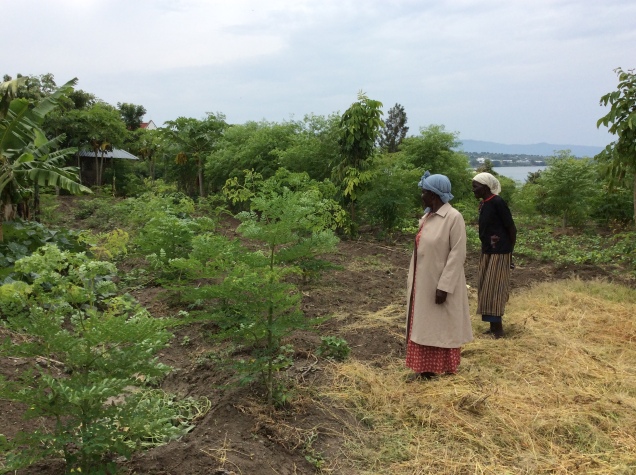Yesterday we had a long drive, about 500km, to Rusinga Island in Western Kenya. It was according to google maps going to take about 7 hours but in reality took 12 hours. Google maps didn’t take into account the unexpected two stops by the police, the 500 speed bumps and traffic jams in towns. Welcome to Africa! We did though see some great sites. we went through the Great Rift Valley

We also went through the highlands where there was large areas of tea plantations

One of the reasons we drove this long distance was to see Dennis Siroh and the great work he is doing on Rusinga
Rusinga Island has been degraded by human activities over the last 30 yrs. The islands population has gone from 5,000 to 35,000 in 30 yrs. This has lead to deforestation as people have cut down tres to smoke fish and there is no livestock fencing so the cattle and goats have eaten the regrowth down.

The hill in the background has few trees left and this has also lead to less rainfall on the island. The island traditionally been fishing based but lake Victoria has been over fished, so there is less fish caught. The common crops are also just maize and beans which are only in the ground for 3 months and can fail. This has lead to the project that Denis is involved in with the Organic Farmers of Rusinga Island and Permaculture Research Institute Kenya. The idea of the project is to encourage permaculture principles on small farms so they can feed themselves and have surplus to sell. Below is Dennis’s small holding:

The idea of permaculture is to have high diversity if plants which all have a use and to make the best use of the rainfall. Some of the crops Dennis grows are Papaya, Sweet potato, cow pea, bananas, Moringa just to name a few. Moringa is the most interesting crop. It is a tree that is nitrogen fixing, produces, fodder, timber, leaves are medicinal and the oils are sold for cosmetics. LUSH the UK cosmetic company have grant aided some set up costs and also buy the oil from the Moringa seeds for their products. The leaves of the tree are also dried and made into a powder

This powder helps the immune system and helps slow down the effects of HIV, which is a problem here. From Dennis’s half acre plot he feeds seven people and has surplus food
The next person we saw was Julie

Julie is the star grower. She feeds her large family and by the sounds of it a lot of the village. Today she was harvesting 3 different crops: Moringa, cassava and beans. This plot has only been in for 2 yrs and Julie on average only spends 1-2 hrs per day working in there. We left with Papaya and cassava for lunch.
Next we went to see Doreen

Doreen is also one of the founding growers. Doreen was growing bananas and pumpkins together

Bananas are heavy feeders in terms of water and nutrients. Pumpkins provide shade to conserve water also you can eat the pumpkin leaves and the pumpkins. Speaking to Doreen and Julie they told us that they meet every 2 weeks to share ideas with the group and they also save money as a group and lend it out to people for investing in new ideas and inputs.
We then visited the project offices where there is a demonstration site.
 There Isiah showed us the nursery they have. They will propagate trees and plants and give them out to farmers. They will also save seeds from the farms and hand them back to the farmers. They also showed us the plant Tephrosia
There Isiah showed us the nursery they have. They will propagate trees and plants and give them out to farmers. They will also save seeds from the farms and hand them back to the farmers. They also showed us the plant Tephrosia

It is a pesticide plant as it repels insects including stem borer in Maize and also aphids. It though is poisonous.
They are also going to try to exploit agro-tourism in the island

Rusinga is known as bird island and is an ornithologist’s heaven. Once they have healed the landscape there is huge potential from tourism.
We had a great day at Rusinga and were very impressed with what they are doing. The island is a input salesman’s nightmare as it has never used artificial inputs but can still produce large amounts of food when looked after. They only have just over 20 farmers in the project but aim to increase that to 6000. The effects for the people will not only be economic but social and environmental. Thank you Dennis for your time.
Really interesting Andy and an example of how small farmers are able to feed themselves as well as their communities.
LikeLike